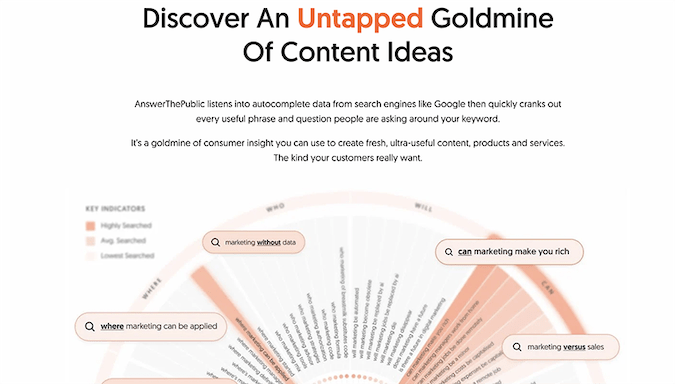How to Create a Social Media Content Strategy in 8 Steps
In the rapidly evolving landscape of digital marketing, having a robust social media content strategy is paramount to a brand’s success. Among the array of social media platforms available, Pinterest stands out as a unique visual discovery engine that is gaining significant traction as a marketing tool. With over 300 million active users, leveraging Pinterest marketing effectively can boost brand visibility, drive traffic, and increase sales. Crafting a well-thought-out social media content strategy tailored for platforms like Pinterest is key to maximizing these benefits.
A social media content strategy serves as a roadmap that guides businesses in planning, creating, publishing, and managing all their social media content effectively. It ensures that every piece of content shared aligns with the brand’s goals, resonates with the target audience, and ultimately drives engagement and conversions. Here are eight essential steps to help you craft a successful social media content strategy with a focus on Pinterest marketing:
1. Define Your Goals and Objectives
The first step in creating a social media content strategy is to establish clear and measurable goals. Whether your objective is to increase brand awareness, drive website traffic, or boost sales, defining specific goals will provide direction for your content creation and performance evaluation. When it comes to Pinterest marketing, consider objectives such as increasing pin engagement, generating website referrals, or growing your follower base.
2. Know Your Audience
Understanding your target audience is crucial for crafting content that resonates with them. Conduct research to identify the demographics, interests, and preferences of Pinterest users who engage with your brand or products. Determine the type of content that appeals to them, such as inspirational quotes, DIY tutorials, product showcases, or lifestyle imagery. Tailoring your content to suit the Pinterest audience will help you drive higher engagement and build a loyal following.
3. Conduct a Competitive Analysis
To stand out in a crowded social media landscape, it’s essential to stay informed about your competitors’ strategies and performance. Analyze the Pinterest presence of your competitors, including their content types, posting frequency, engagement levels, and follower growth. Identify gaps in their strategies that you can leverage to differentiate your brand and attract more attention from Pinterest users. Learning from your competitors’ successes and failures can inform your own content strategy and set you apart in the platform.
4. Create a Content Calendar
Consistency is key to maintaining an active and engaging presence on social media, including Pinterest. Develop a content calendar that outlines the type of content you plan to share, along with the posting schedule. Consider key events, holidays, or trends that are relevant to your brand and incorporate them into your content plan. A well-organized content calendar will help you stay on track, maintain a regular posting schedule, and ensure that your content is diverse and engaging for your audience.
5. Optimize Your Pinterest Profile
Your Pinterest profile serves as the first impression for users visiting your page, making it essential to optimize it for maximum impact. Ensure that your profile is complete and accurately reflects your brand identity, including a clear profile picture, a compelling bio, and relevant boards that showcase your content. Use relevant keywords in your profile description and board titles to enhance discoverability and attract users interested in your niche. A well-optimized Pinterest profile can help you attract more followers and drive traffic to your website or online store.
6. Create Compelling Visual Content
As a visual platform, Pinterest places a strong emphasis on high-quality and engaging visual content. Invest in creating eye-catching images, graphics, and videos that capture the attention of users scrolling through their feeds. Utilize professional photography, graphic design tools, and video editing software to produce visually appealing content that aligns with your brand aesthetic. Include text overlays, branding elements, and calls-to-action in your visuals to enhance engagement and encourage users to explore your pins further.
7. Leverage Pinterest Features
Pinterest offers a range of features and tools that can enhance your content strategy and drive better results. Explore options such as Rich Pins, Promoted Pins, and Pinterest Analytics to optimize your presence on the platform. Rich Pins provide additional information and context for pins related to products, recipes, articles, or apps, enhancing their discoverability and relevance. Promoted Pins allow you to amplify your reach and target specific audiences through paid advertising. Pinterest Analytics provides insights into your audience demographics, pin performance, and website referrals, enabling you to refine your strategy based on data-driven decisions.
8. Monitor and Measure Performance
Monitoring the performance of your social media content is crucial for evaluating the effectiveness of your strategy and making informed decisions moving forward. Track key metrics such as engagement rate, click-through rate, follower growth, and website traffic generated from Pinterest. Use analytics tools to assess the performance of individual pins, boards, and overall account activity. Identify top-performing content and understand what resonates most with your audience to inform future content creation. By regularly monitoring and measuring your performance, you can optimize your social media content strategy for success on Pinterest and beyond.
In conclusion, creating a social media content strategy tailored for platforms like Pinterest requires a strategic approach that considers the unique characteristics of the platform and its user base. By following these eight steps and emphasizing Pinterest marketing best practices, you can craft a compelling content strategy that drives engagement, increases brand visibility, and delivers tangible results for your business. Stay informed about the latest trends and updates on Pinterest to adapt your strategy accordingly and stay ahead of the competition in the ever-evolving social media landscape.

Ecommerce Analytics: The Ultimate Guide to Data Collection for Pinterest Marketing Success
In the fast-paced world of ecommerce, data reigns as king. From tracking customer behavior to monitoring sales trends, the insights gained from analytics can make or break a business. When it comes to the realm of Pinterest marketing, the importance of collecting and analyzing data cannot be overstated. In this comprehensive guide, we delve into the best practices for data collection to help Pinterest marketers thrive in the competitive online landscape.
Pinterest has emerged as a powerhouse in the world of social media marketing, with its visually appealing platform attracting millions of users looking for inspiration and products. For ecommerce businesses looking to tap into this vast potential, understanding the nuances of Pinterest analytics is crucial. By harnessing the power of data, marketers can gain valuable insights into their audience, refine their strategies, and drive engagement and conversions.
One of the key metrics that Pinterest marketers should pay close attention to is audience engagement. By analyzing metrics such as repins, likes, and comments, marketers can gauge the response to their pins and tailor their content to better resonate with their audience. Tracking these engagement metrics over time can provide valuable insights into what types of content perform best and help marketers optimize their Pinterest strategy for maximum impact.
In addition to audience engagement, tracking traffic and conversions is essential for measuring the effectiveness of Pinterest marketing efforts. By using tools like Pinterest Tag or Google Analytics, marketers can monitor traffic coming from Pinterest, track conversions, and attribute revenue to their Pinterest campaigns. This data can help marketers understand the ROI of their Pinterest marketing efforts and make informed decisions on where to allocate their resources for maximum impact.
Another important aspect of Pinterest analytics is tracking trends and performance metrics. By monitoring key performance indicators such as click-through rates, conversion rates, and average order value, marketers can gain insights into the effectiveness of their campaigns and identify areas for improvement. Additionally, keeping an eye on trending topics, popular pins, and seasonality can help marketers stay ahead of the curve and capitalize on emerging opportunities.
In the competitive world of ecommerce, data is the lifeblood of success. By leveraging the power of analytics, Pinterest marketers can gain a competitive edge, drive growth, and maximize their ROI. Whether you’re a seasoned Pinterest pro or just starting out, mastering the art of data collection and analysis is essential for achieving success in the dynamic world of ecommerce.
In conclusion, Pinterest marketing offers a wealth of opportunities for ecommerce businesses looking to expand their online presence and reach new customers. By harnessing the power of data analytics, marketers can gain valuable insights, optimize their strategies, and drive results on the platform. As the ecommerce landscape continues to evolve, staying ahead of the curve with data-driven decisions will be crucial for success. So, roll up your sleeves, dive into the world of Pinterest analytics, and unlock the full potential of your ecommerce business.

